One of the great documentary photographers.
Andreas Feininger (1906-1999), though born in Paris, was a German Jew whose parents made the wise decision to move to Sweden in 1936. Feininger then immigrated to the United States in 1939. Had these moves not been made he would almost certainly have died in the German killing machine.
And Feininger’s timing could not have been better with regard to his profession of photojournalist, for LIFE magazine was in its heyday and photographs were actually of monetary value. His association with LIFE lasted almost two decades through 1962.
Feininger is noted for his city and industrial scenes as well as close-ups of plants. It’s the former which are illustrated here.
Enjoying a tremendous consumer boom, New York was never more vibrant than in the 1950s. A victorious Eisenhower was soon to be president (1952-60) after a stint fixing what ailed Columbia University as its Dean. All that mighty military production was turned to churning out cars and houses for newly affluent, young Americans and while domestic and foreign conflicts continued, America was mostly at peace with itself and with the world.
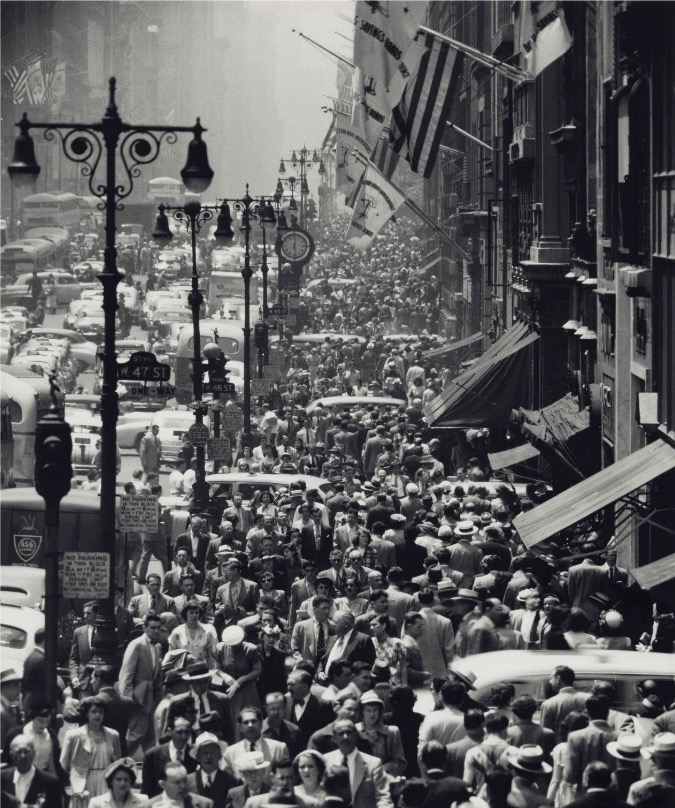
The bustle of thriving Manhattan. 1950.
Steam still dominated long distance travel, and while it may have taken a while to get to Chicago or points further west, never was long distance travel more civilized.
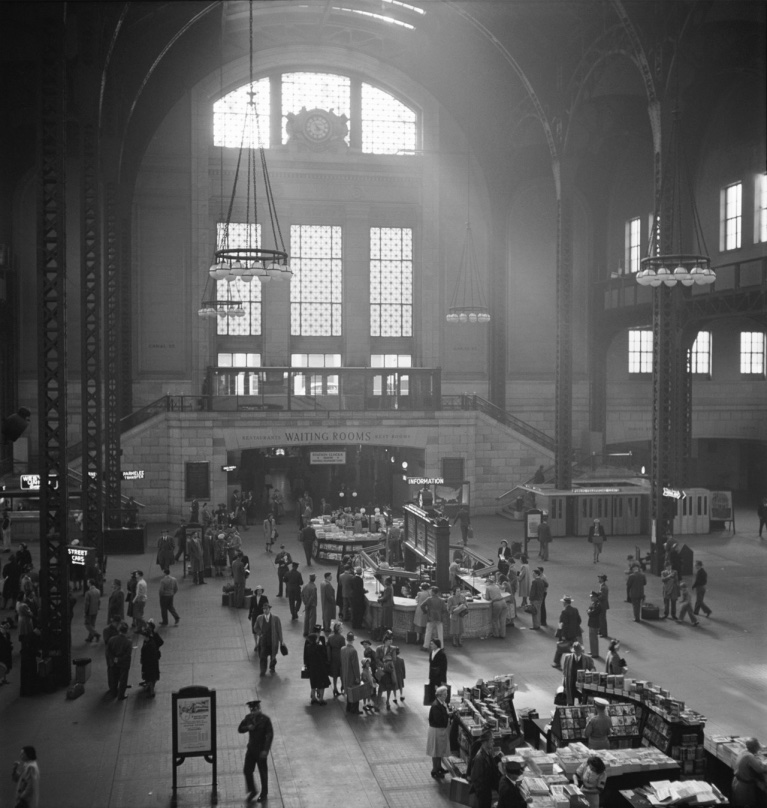
Union Station, Chicago. 1948.
Watch the Stanley Donen directed 1949 musical ‘On the Town’ with dancing and singing by Frank Sinatra and Gene Kelly and you will see some of the last images of the elevated east side subway, soon to be torn down. New York and nostalgia have never been bedmates. Doubtless, were the movie remade today, the protagonists would be homosexuals with an opioid habit. Feininger shows the EL at its best.
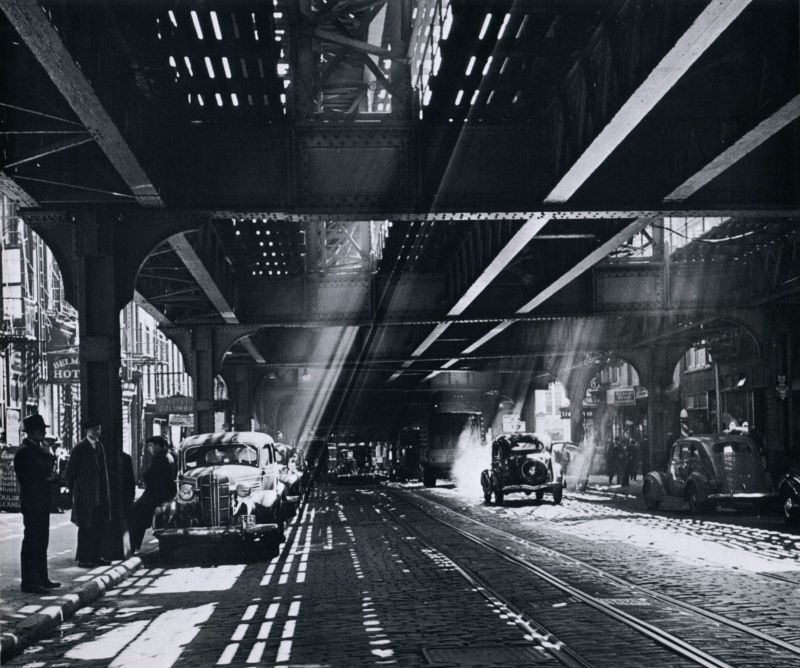
Beneath the EL subway, NYC, 1948.
If steam trains were the way to cross the continent, it was the great Cunard liners, joined by the SS France and the steamship The United States, which saw to it that you would cross the Atlantic safely to the new world. Never was the atmosphere better illustrated than in Stanley Donen’s (again) 1951 Royal Wedding where Fred Astaire crosses the Atlantic (going the wrong way). The movie features the famous ‘dancing on the ceiling’ number, as breathtaking today as it was over a half century ago. Feininger’s image of the west side docks shows a New York before the invasion of ghastly steel and glass buildings. Here all is united in the neo-classical style which dominated architectural high rises.
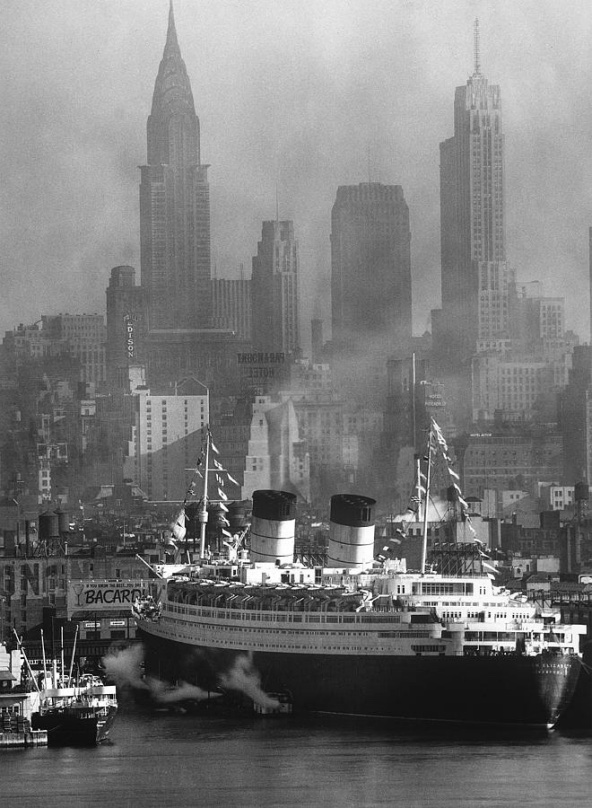
The Queen Elizabeth docked in Manhattan. 1958.
While Feininger was rarely to be found in the studio, his best known image is of Dennis Stock, one of the early members (1951) of the Magnum photo agency. This collective of photographers, whose founders (1947) include Henri Cartier-Bresson, was the gold standard in reportage.
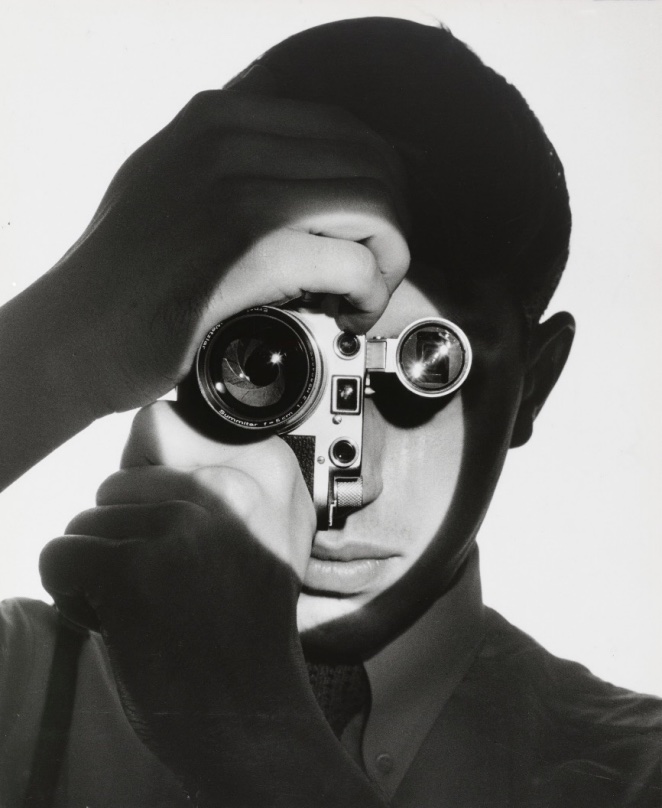
Dennis Stock of Magnum with a Leica IIIC.
We live in a world of Instagram and Pinterest. The value of a photograph is zero unless it shows the Oval Office pig cavorting with a whore. So it’s a pleasure to share these images from a time when photography ruled reportage.